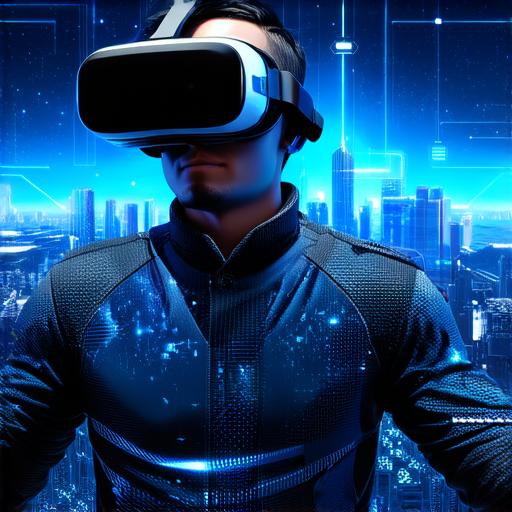What is the Metaverse?
The metaverse is a term used to describe a hypothetical shared space, created by the convergence of virtually enhanced physical reality and physically persistent virtual space, including the sum of all virtual worlds, augmented reality, and the internet. In simpler terms, it refers to a virtual world that exists beyond the physical realm, accessible through digital devices such as smartphones, laptops, and virtual reality headsets.
History of the Metaverse
The concept of the metaverse can be traced back to 1984, when Neal Stephenson coined the term in his science fiction novel “Snow Crash.” In the book, the metaverse is a vast network of virtual worlds where people can interact with each other and experience new things. However, it wasn’t until the early 2000s that the term started to gain popularity, thanks to advancements in technology and the rise of social media platforms like Second Life.
Potential of the Metaverse
The potential of the metaverse is vast and varied. Some of the ways in which it could transform our lives include:
- Virtual Education: The metaverse could provide a virtual classroom where students can learn from anywhere, at any time. This would be particularly useful for people living in remote areas or for those with disabilities who may have difficulty attending traditional classes.
- Remote Work: The metaverse could enable remote work, allowing people to collaborate and communicate with their colleagues from anywhere in the world. This could lead to more flexible work schedules and reduced commuting times.
- Gaming and Entertainment: The metaverse could offer a new level of immersion and interactivity in gaming and entertainment, allowing people to experience things that were previously impossible or too expensive.
- Virtual Travel: The metaverse could enable virtual travel, allowing people to explore new places without leaving their homes. This would be particularly useful for those who are unable to travel due to financial or health reasons.
How to Comprehend the Metaverse?
Comprehending the metaverse can be challenging, especially if you are not familiar with the concept. Here are some tips to help you understand and navigate this virtual reality:
- Research: Start by researching the metaverse and its various aspects. This will give you a better understanding of what it is and how it works. You can use search engines, online forums, and social media platforms to gather information about the metaverse.
- Experiment: Try out different virtual reality experiences to get a feel for how they work. This will help you understand the capabilities of the metaverse and how it could be used in different contexts.
- Connect with others: Join online communities and forums related to the metaverse to connect with like-minded individuals who can share their knowledge and experiences with you.
Case Studies and Personal Experiences
One of the best ways to understand the metaverse is through case studies and personal experiences. Here are a few examples:
- Second Life: As mentioned earlier, Second Life is one of the most well-known virtual worlds. It allows people to create avatars and interact with each other in a 3D environment. Many people use it for socializing, gaming, and even shopping.
- VR Games: Virtual reality games are another example of how the metaverse can be used for entertainment. These games offer a level of immersion and interactivity that is unparalleled by traditional gaming platforms.
- Remote Work: The COVID-19 pandemic has accelerated the adoption of remote work, and many companies are now using virtual reality to enable remote collaboration and communication. For example, some architects use virtual reality to showcase their designs to clients, while others use it to train employees in remote locations.
Summary
The metaverse is a fascinating concept that has the potential to transform the way we interact and experience the world.

